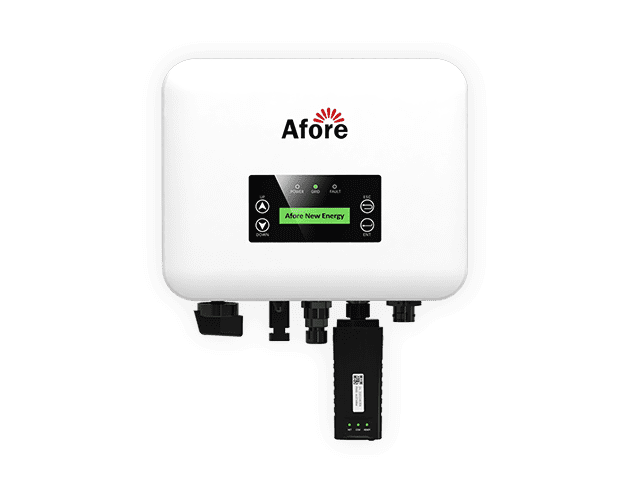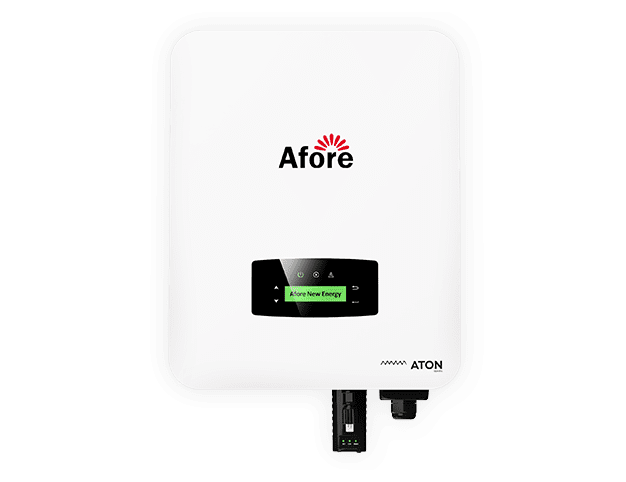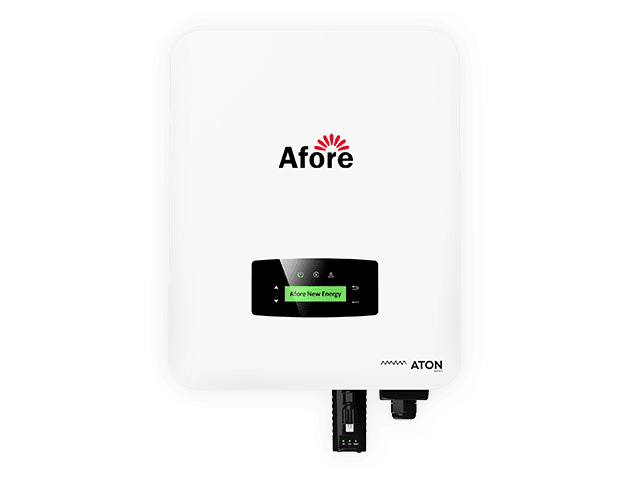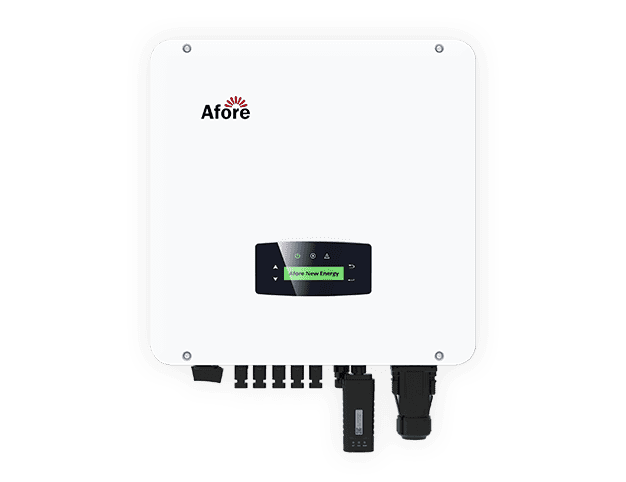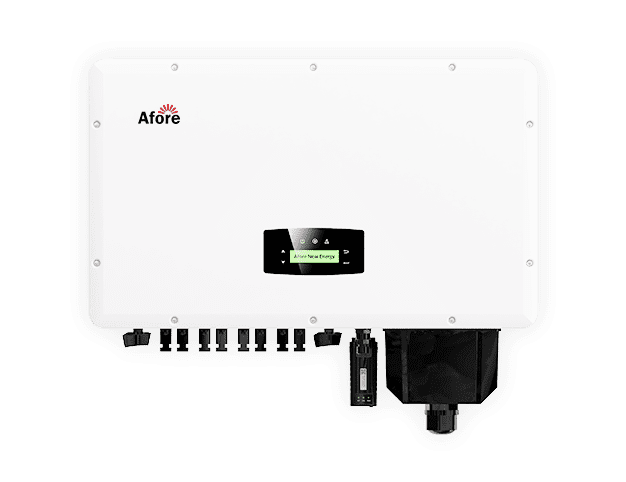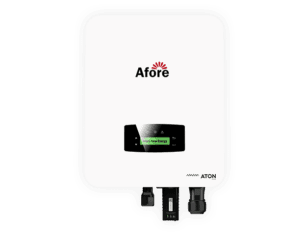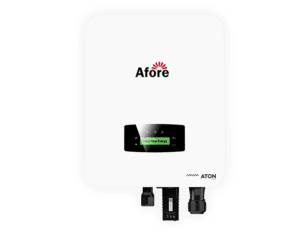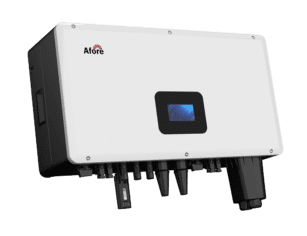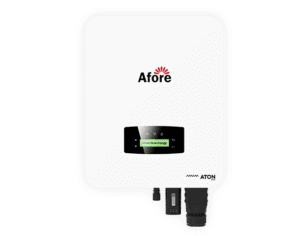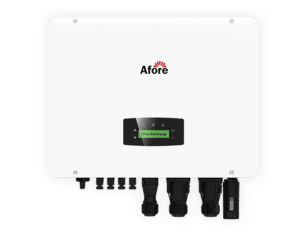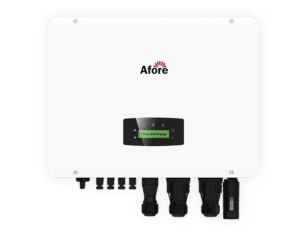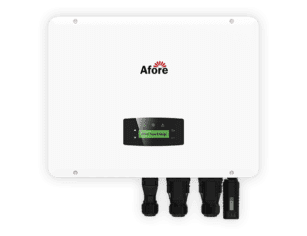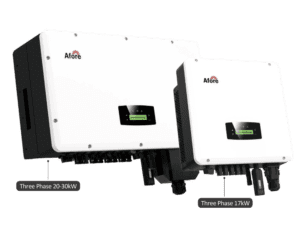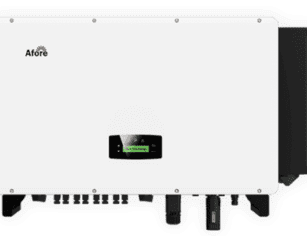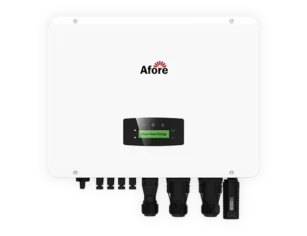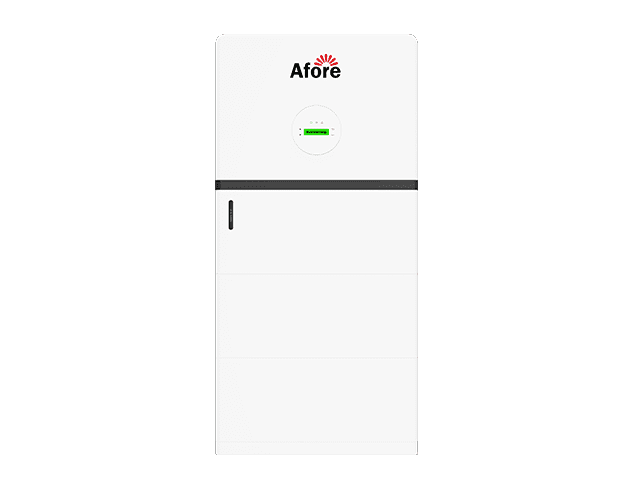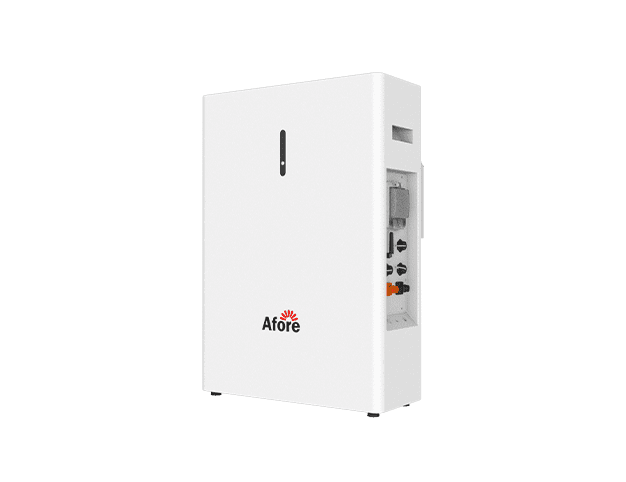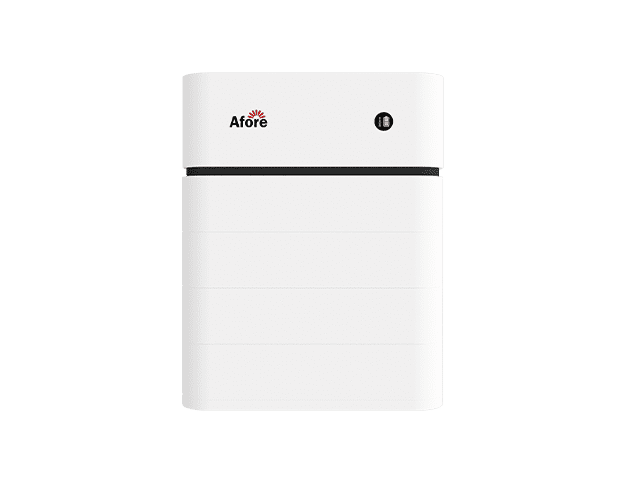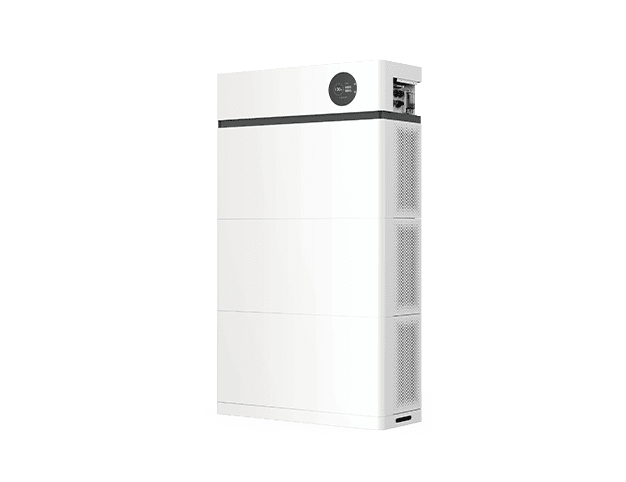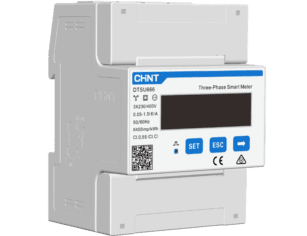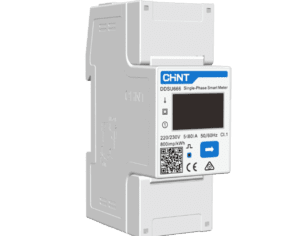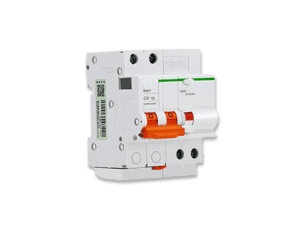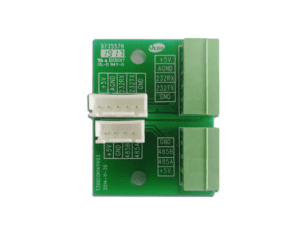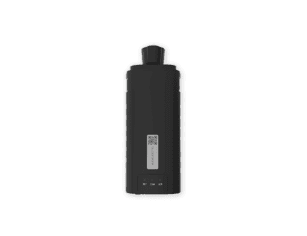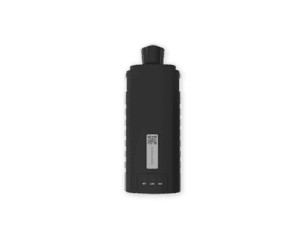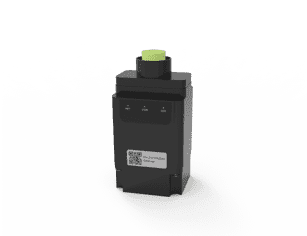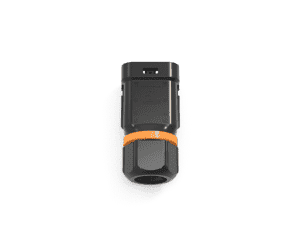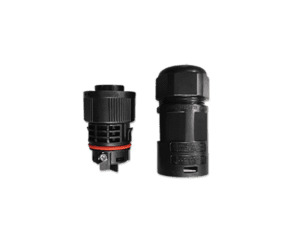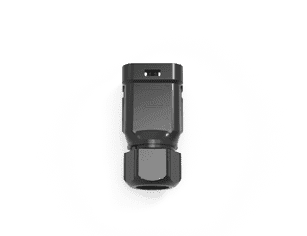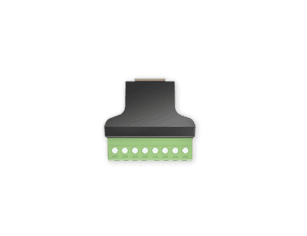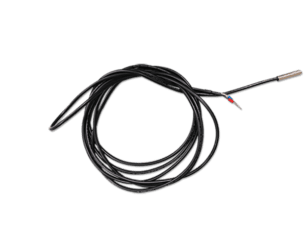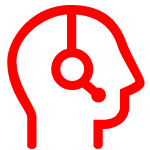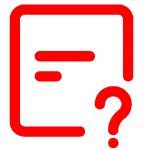Verteilte Energieressourcen: Energie für eine intelligentere Zukunft

Inhaltsübersicht
Angesichts des steigenden Energiebedarfs und der zunehmenden Klimasorgen überdenken Gemeinden und Unternehmen die Art und Weise, wie Strom erzeugt, gespeichert und verbraucht wird. Verteilte Energieressourcen (Distributed Energy Resources, DER) stehen im Mittelpunkt dieses Wandels. Von Solarzellen auf dem Dach in Verbindung mit einem Solarwechselrichter bis hin zu Batteriespeichersystemen und kleinen Windturbinen - DER-Technologien ermöglichen es den Nutzern, Energie näher am Ort des Bedarfs zu erzeugen und so die Abhängigkeit von veralteten zentralen Netzen zu verringern und den CO2-Ausstoß zu reduzieren. Dieser Leitfaden zeigt auf, wie DERs die Energielandschaft umgestalten, warum sie für eine widerstandsfähige Zukunft unerlässlich sind und wie Hausbesitzer und Gewerbebetriebe an der dezentralen Energierevolution teilhaben können.
Einführung in verteilte Energieressourcen (DER)
Stellen Sie sich eine Welt vor, in der Energie nicht nur in großen, weit entfernten Kraftwerken erzeugt und durch kilometerlange Übertragungsleitungen geleitet wird, bevor sie bei Ihnen zu Hause ankommt. Diese Welt ist jetzt da, dank der dezentralen Energieressourcen. Dezentrale Energiequellen verändern das traditionelle Stromnetz, indem sie die Stromerzeugung und -speicherung dezentralisieren. Ob Solarzellen auf Ihrem Dach oder ein Batteriesatz in Ihrer Garage - DERs bringen die Energieerzeugung näher an den Ort des Verbrauchs.
Verteilte Energieressourcen beziehen sich auf eine breite Palette von kleinen Einheiten, die lokal Strom erzeugen oder speichern. Dazu gehören Solarzellen auf dem Dach, Batteriespeichersysteme, kleine Windturbinen, Mikroturbinen, Kraft-Wärme-Kopplungsanlagen (KWK) und sogar Elektrofahrzeuge, wenn sie netzdienlich eingesetzt werden. Mit der Solar-Wechselrichtertechnologie als Herzstück vieler dieser Systeme bieten DERs eine intelligentere, widerstandsfähigere Möglichkeit zur Stromversorgung von Haushalten, Unternehmen und ganzen Gemeinden.
Aber DERs sind nicht nur bequem. Sie spielen auch eine entscheidende Rolle bei der Verringerung der Kohlendioxidemissionen, der Verbesserung der Energiesicherheit und der Bereitstellung von Notstrom bei Netzausfällen. Die Bewegung hin zu DERs verändert die Energielandschaft und gibt den Verbrauchern mehr Kontrolle und Flexibilität über ihren Stromverbrauch.
Verständnis der verteilten Erzeugung im Vergleich zu verteilten Energieressourcen
Was ist verteilte Stromerzeugung (DG)?
Unter dezentraler Stromerzeugung (DG) versteht man die Stromerzeugung vor Ort oder in der Nähe des Verbrauchsortes. Denken Sie dabei an Solaranlagen auf dem Dach, kleine Windturbinen oder Biomassegeneratoren. Das Hauptmerkmal dabei ist, dass der Strom in der Nähe des Verbrauchsortes erzeugt wird, wodurch Übertragungsverluste reduziert und die Effizienz verbessert wird.
IBM erklärt, dass die erneuerbaren Energien ein wichtiger Bestandteil des sich entwickelnden intelligenten Stromnetzes sind und Vorteile wie einen geringeren Übertragungsbedarf, eine höhere Zuverlässigkeit und eine bessere Integration der erneuerbaren Energien bieten.
DER umfasst Erzeugung, Speicherung und Lastmanagement
Die dezentralen Energieressourcen sind zwar ein wesentlicher Teil des Puzzles, aber sie umfassen viel mehr. DERs umfassen nicht nur die Stromerzeugung, sondern auch Speicher (wie Lithium-Ionen-Batterien), Demand-Response-Systeme und Energieeffizienztechnologien. Im Grunde genommen ist DER ein breiterer Begriff, bei dem DG ein Teil ist.
Nach Angaben der EPA und des DOE können DER-Systeme unabhängig funktionieren oder in das Netz integriert werden. Diese Ressourcen produzieren nicht nur Energie, sondern helfen auch zu steuern, wie und wann sie genutzt wird, und schaffen so eine flexiblere und widerstandsfähigere Energieinfrastruktur.
FAQ: Was ist der Unterschied zwischen verteilter Erzeugung und verteilten Energieressourcen?
Antwort: Der Begriff "dezentrale Erzeugung" bezieht sich speziell auf die Stromerzeugung in der Nähe des Verbrauchsortes, wie z. B. Solarzellen auf dem Dach. Verteilte Energieressourcen ist ein weiter gefasster Begriff, der sowohl verteilte Erzeugung als auch Energiespeicherung, Lastmanagement und Energieeffizienzlösungen umfasst.
Die wichtigsten Arten von dezentralen Energiequellen
Verteilte Energieressourcen (Distributed Energy Resources, DER) gibt es in verschiedenen Formen, die jeweils einzigartige Vorteile bieten und eine wichtige Rolle bei der Dezentralisierung des Energienetzes spielen. Im Folgenden werden die Kernkategorien, die die DER-Landschaft definieren, aufgeschlüsselt - von Erzeugungstechnologien wie der Photovoltaik bis hin zu neuen Trends im nachfrageseitigen Energiemanagement.
Solar-Photovoltaik (PV) & Solar-Wechselrichter
Eine der am weitesten verbreiteten Formen der dezentralen Energieressourcen ist die Photovoltaik (PV). Solarmodule auf Dächern sind ein alltäglicher Anblick in Wohnvierteln, Geschäftsgebäuden und sogar auf landwirtschaftlichen Flächen geworden. Sie wandeln das Sonnenlicht mit Hilfe von Halbleitermaterialien in Gleichstrom (DC) um.
Solarmodule allein können jedoch die meisten Geräte oder das Stromnetz nicht mit nutzbarer Energie versorgen. An dieser Stelle kommt der Solarwechselrichter ins Spiel. Dieses Gerät ist unerlässlich für die Umwandlung von Gleichstrom in Wechselstrom (AC), dem Standard für Haushalte und die Netzversorgung. Über die Umwandlung hinaus verfügen moderne Solarwechselrichter oft über intelligente Funktionen wie Fernüberwachung, Netzinteraktionsprotokolle und die Einhaltung von Normen wie IEEE 1547 und UL 1741.
Es gibt verschiedene Arten von Solarwechselrichtern:
- String-Wechselrichter, die mehrere Paneele in Reihe schalten;
- Mikro-Wechselrichter, die auf einzelnen Modulen installiert werden, um die Leistung zu optimieren;
- Hybrid-Wechselrichter, die auch Batteriespeicher verwalten.
Diese Wechselrichter verbessern nicht nur die Systemleistung, sondern sind auch entscheidend für die Netzzählung, die Reservestromfunktionen und die Integration in virtuelle Kraftwerke (VPPs). Als Schnittstelle zwischen der Solarstromerzeugung und dem allgemeinen elektrischen System sind Solarwechselrichter im heutigen DER-Ökosystem unverzichtbar.
Batteriespeichersysteme
Wenn die Solarenergie der Motor des modernen DER ist, dann ist die Batteriespeicherung der Kraftstofftank. Mit der zunehmenden Verbreitung von intermittierenden erneuerbaren Energiequellen wie Solar- und Windenergie war es noch nie so wichtig wie heute, überschüssige Energie für die Zeit zu speichern, in der sie nicht erzeugt wird.
Batteriespeichersysteme (BESS) fangen Strom in Zeiten geringer Nachfrage oder hoher Produktion auf und entladen ihn dann, wenn er am meisten benötigt wird - sei es zu Spitzenverbrauchszeiten oder bei Netzausfällen. Diese Systeme verbessern die Netzzuverlässigkeit, senken die Energiekosten durch Lastverschiebung und erhöhen die Energieresilienz für Haushalte und Unternehmen.
Zu den gängigen Technologien gehören:
- Lithium-Ionen-Batterien, bekannt für hohe Energiedichte und lange Lebensdauer;
- Blei-Säure-Batterien, die üblicherweise in Backup-Systemen verwendet werden;
- Durchflussbatterien, geeignet für Anwendungen mit längerer Speicherdauer.
In Verbindung mit einer Photovoltaikanlage und einem Solarwechselrichter ermöglichen Batterien eine echte Energieunabhängigkeit und verwandeln Häuser und Gebäude in autarke Mikrokraftwerke. Programme in den gesamten USA, wie die vom Energieministerium und den staatlichen Energieversorgungskommissionen unterstützten, bieten Anreize für die Einführung von Batteriespeichern als Teil umfassenderer DER-Strategien.
Brennstoffzellen, Mikrogasturbinen, KWK-Anlagen, Kleinwindkraft, Biomasse
Neben Solar- und Speicherkapazitäten umfassen die dezentralen Energieressourcen ein breites Spektrum an kleinen Erzeugungstechnologien, von denen viele steuerbar sind und unabhängig von den Wetterbedingungen betrieben werden können.
- Brennstoffzellen: Wandeln Wasserstoff oder Erdgas durch eine elektrochemische Reaktion in Strom um. Sie sind hocheffizient und erzeugen nur minimale Emissionen, was sie ideal für Krankenhäuser, Rechenzentren und militärische Einrichtungen macht.
- Mikroturbinen: Kompakte Gasturbinen, die in gewerblichen und leichtindustriellen Anwendungen eingesetzt werden. Diese Anlagen werden in der Regel mit Erdgas betrieben und werden für ihre Zuverlässigkeit und ihren geringen Wartungsaufwand geschätzt.
- Kraft-Wärme-Kopplung (KWK): KWK-Anlagen, auch bekannt als Kraft-Wärme-Kopplung, erzeugen gleichzeitig Strom und nutzbare Wärmeenergie aus einer einzigen Brennstoffquelle. Sie sind besonders effizient in Einrichtungen mit konstantem Wärmebedarf, wie Universitäten und Produktionsstätten.
- Kleine Windturbinen: Diese Turbinen sind eine verkleinerte Version der Windkraftanlagen von Energieversorgern und werden häufig in ländlichen oder netzunabhängigen Gebieten eingesetzt. Obwohl sie standortspezifisch sind, können sie den lokalen Energiebedarf wirksam ergänzen.
- Biomasse-Generatoren: Sie nutzen organische Materialien wie landwirtschaftliche Abfälle oder Holzschnitzel zur Erzeugung von Strom und Wärme. Wenn sie aus nachhaltiger Quelle stammt, gilt Biomasse als erneuerbare DER-Option.
Jede dieser Technologien ist auf spezielle Energieanforderungen und Umweltziele ausgerichtet. Ihre Flexibilität und ihr lokaler Charakter machen sie zu einem wertvollen Bestandteil von Mikronetzen und Resilienzzentren, in denen Zuverlässigkeit an erster Stelle steht.
Nachfragesteuerung und Energieeffizienz
Nicht alle dezentralen Energieressourcen erzeugen Strom. Einige steuern, wie und wann Strom verbraucht wird - und das ist für die Netzstabilität und Kostenkontrolle ebenso wichtig.
Der Begriff Demand Response (DR) bezieht sich auf Strategien, die den Stromverbrauch der Verbraucher während der Spitzenlastzeiten anpassen. Versorgungsunternehmen und Netzbetreiber schaffen Anreize für ihre Kunden, ihren Stromverbrauch bei Stressereignissen - wie Hitzewellen oder Geräteausfällen - zu reduzieren oder zu verlagern, um Stromausfälle zu verhindern und den Bedarf an fossilen Spitzenkraftwerken zu verringern.
Zu den Werkzeugen und Technologien für DR gehören:
- Intelligente Thermostate und HLK-Steuerungen
- Automatisierte Beleuchtungssysteme
- Industrielle Lastabwurfprotokolle
In der Zwischenzeit senken Energieeffizienzmaßnahmen den Gesamtverbrauch, indem sie die Energienutzung in Gebäuden und Geräten verbessern. Dies umfasst alles von LED-Beleuchtung bis hin zu moderner Isolierung und hocheffizienten Geräten. Effizienzverbesserungen senken die Stromrechnungen und verringern die Größe der erforderlichen Erzeugungs- und Speichersysteme.
Sowohl die Nachfragereduzierung als auch die Energieeffizienz tragen zu dem bei, was als virtuelle DER-Ressourcen bezeichnet wird - Ressourcen, die zwar keine physische Energie erzeugen, aber die Nachfrage genauso effektiv reduzieren. Laut EPA und NREL können diese Ressourcen in ihrer Gesamtheit eine erhebliche Netzunterstützung bieten, oft zu geringeren Kosten als neue Kraftwerke.
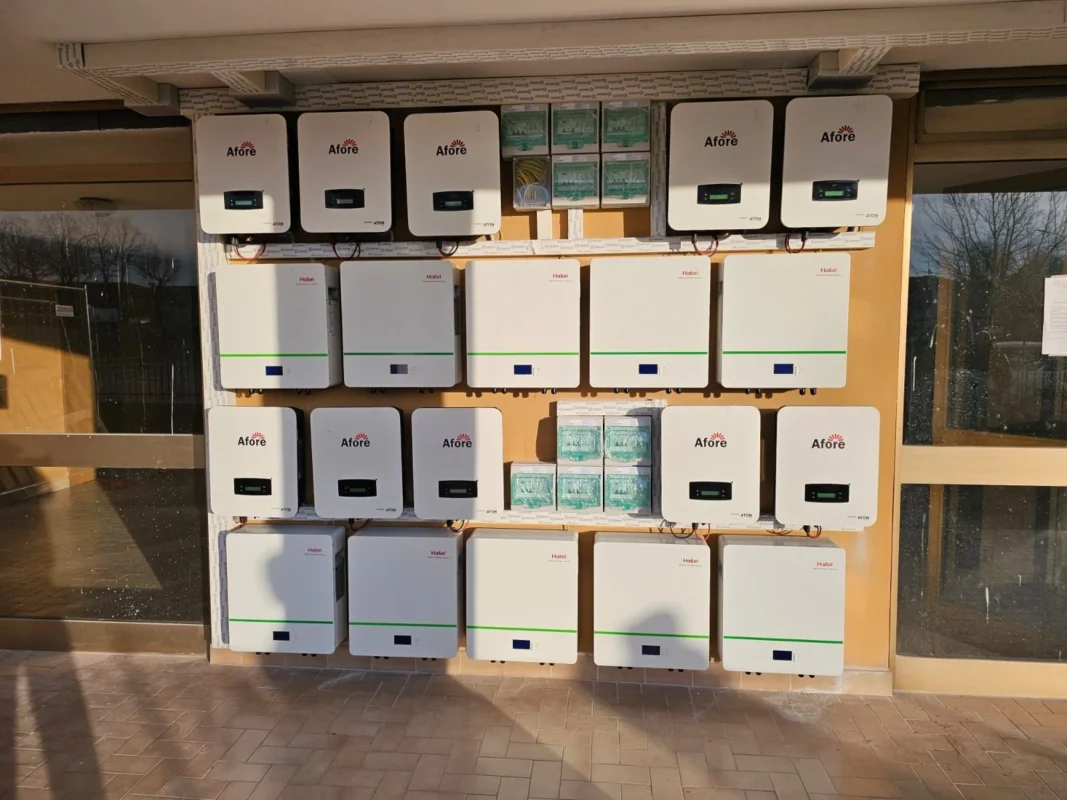
Anwendungen in der realen Welt und Umfang des Einsatzes von DER
Der Übergang von zentralen Kraftwerken zu dezentralen Energieressourcen (Distributed Energy Resources, DER) ist nicht nur eine Zukunftsvision, sondern findet bereits in großem Umfang statt. Gemeinden, Unternehmen und Versorgungsunternehmen nutzen DER, um die Energiesicherheit zu verbessern, die Kosten zu senken und die Kohlenstoffemissionen zu reduzieren. Sehen wir uns an, wie diese Technologien heute eingesetzt werden, mit Beispielen aus der Praxis und neuen Modellen wie virtuellen Kraftwerken.
Wie wird dezentrale Energie heute genutzt?
Überall auf der Welt verändern dezentrale Energieressourcen die Art und Weise, wie Strom erzeugt und verbraucht wird. In Wohngebieten ist die Solaranlage auf dem Dach in Kombination mit einem Solarwechselrichter eines der sichtbarsten Beispiele. Hauseigentümer versorgen nicht nur ihre eigenen Geräte mit Strom, sondern speisen auch überschüssige Energie im Rahmen von Net-Metering-Programmen in das Netz ein und verringern so die Abhängigkeit von herkömmlichen Kraftwerken.
Im gewerblichen Sektor verbessern Batteriespeichersysteme und Kraft-Wärme-Kopplungsanlagen (KWK) die betriebliche Ausfallsicherheit. Krankenhäuser, Rechenzentren und kritische Einrichtungen verlassen sich zunehmend auf DER als Notstromversorgung, um den Betrieb bei Netzausfällen aufrechtzuerhalten. Auch Schulen und Regierungsgebäude investieren in Mikronetze, die PV-Anlagen, Solarwechselrichter und Batteriespeicher kombinieren, um Zuverlässigkeit und niedrigere Betriebskosten zu gewährleisten.
Auf kommunaler Ebene setzen Gemeinden DER zur Stromversorgung von Straßenbeleuchtung, kommunalen Gebäuden und Wasseraufbereitungsanlagen ein. Dies senkt nicht nur die Stromrechnungen, sondern demonstriert auch eine Vorreiterrolle in Sachen Nachhaltigkeit. Nach Angaben des US-Energieministeriums nimmt die Einführung von DER so schnell zu, dass in einigen Regionen bereits über 10% der gesamten Stromkapazität auf dezentrale Erzeugung entfallen.
Beispiel für verteilte Energie
Ein praktisches Beispiel für dezentrale Energieversorgung findet sich in Kalifornien, wo die von den Stromausfällen durch Waldbrände betroffenen Stadtteile auf PV-Solaranlagen umgestellt haben, die mit intelligenten Solarwechselrichtern und Batteriespeichern ausgestattet sind. Diese Haushalte arbeiten bei Stromausfällen unabhängig und fungieren im Wesentlichen als Mini-Kraftwerke.
Ein weiteres Beispiel stammt aus dem ländlichen Minnesota, wo landwirtschaftliche Betriebe kleine Windturbinen und Biomassegeneratoren einsetzen, um die Abhängigkeit vom Netz zu verringern. Diese Anlagen liefern nicht nur konstanten Strom für Bewässerungssysteme und Lagereinrichtungen, sondern senken auch die Betriebskosten, indem sie Abfallprodukte als Brennstoff verwenden.
Auf der gewerblichen Seite haben große Einzelhändler wie Walmart Solaranlagen auf den Dächern in Kombination mit energieeffizienten Systemen installiert, wodurch sie ihre Versorgungskosten drastisch senken und gleichzeitig ein Zeichen für den Umweltschutz setzen. Jeder dieser Fälle veranschaulicht, wie dezentrale Energieressourcen sowohl wirtschaftliche als auch belastbare Vorteile bieten.
Virtuelle Kraftwerke & Aggregierte DER
Die vielleicht innovativste Entwicklung im DER-Bereich ist der Aufstieg der virtuellen Kraftwerke (VPP). Im Gegensatz zu herkömmlichen Kraftwerken bündelt ein VPP Tausende von kleinen DERs - wie PV-Solaranlagen, Hausbatterien, Ladegeräte für Elektrofahrzeuge und Demand-Response-Ressourcen - in einem einzigen koordinierten Netzwerk.
Durch den Einsatz intelligenter Technologien und fortschrittlicher Netzmanagement-Software kann ein VPP gespeicherte Energie verteilen, Verbrauchsmuster anpassen und Netzstabilitätsdienste wie ein konventionelles Kraftwerk bereitstellen. Das VPP-Programm von Tesla in Australien beispielsweise nutzt Tausende von Solar- und Speichersystemen für Privathaushalte, um in Spitzenzeiten Strom zu liefern und so die Belastung des Netzes zu verringern und die Stromkosten für die Teilnehmer zu senken.
Versorgungsunternehmen in den gesamten USA führen derzeit ähnliche Programme durch. In Vermont hat Green Mountain Power erfolgreich Hausbatterien eingesetzt, die zu einer virtuellen Flotte zusammengefasst wurden. In Spitzenzeiten entladen sich diese Batterien gemeinsam, wodurch teure Stromeinkäufe im Großhandel vermieden und Stromausfälle verhindert werden.
Der Erfolg dieser Initiativen beweist, dass dezentrale Energieressourcen, wenn sie gebündelt werden, in einer Größenordnung betrieben werden können, die mit herkömmlichen Kraftwerken vergleichbar ist - ohne die Nachteile für die Umwelt. Und mit der Integration von intelligenten Solarwechselrichtern, Kommunikationsprotokollen und einer fortschrittlichen Messinfrastruktur beginnt sich das Potenzial von VPPs erst zu entfalten.
DER auf privater und kommerzieller Ebene
Verteilte Energieressourcen (Distributed Energy Resources, DER) verändern die Energielandschaft weltweit, aber ihre Auswirkungen sind besonders auf privater und kommerzieller Ebene offensichtlich. Von Hausbesitzern, die ihre Rechnungen senken wollen, bis hin zu Unternehmen, die einen unterbrechungsfreien Betrieb sicherstellen wollen, bieten DER maßgeschneiderte Lösungen, die die Widerstandsfähigkeit, Nachhaltigkeit und langfristige Einsparungen verbessern.
Können Haushalte verteilte Energieressourcen nutzen?
Haushalte stehen bei der Revolution der dezentralen Energieressourcen eindeutig an der Spitze. Der häufigste Einsatz in Privathaushalten beginnt mit Sonnenkollektoren auf dem Dach, die mit einem intelligenten Solarwechselrichter kombiniert werden, um die erzeugte Energie in nutzbaren Strom umzuwandeln. Auf diese Weise können Hausbesitzer ihre Abhängigkeit vom herkömmlichen Stromnetz verringern und gleichzeitig die monatlichen Energiekosten senken.
In Verbindung mit Batteriespeichersystemen können Haushalte den nächsten Schritt in Richtung Energieunabhängigkeit machen. Eine Familie mit einer 5-kW-Solaranlage und einer Lithium-Ionen-Batterie kann beispielsweise ihr Haus tagsüber mit Strom versorgen, überschüssige Energie für die Nacht speichern und sogar während eines Stromausfalls das Licht anlassen. Viele Staaten unterstützen inzwischen Net-Metering-Programme, die es Hausbesitzern ermöglichen, durch den Verkauf von ungenutztem Strom an das Stromnetz Gutschriften zu erhalten.
Intelligente Haustechnologien fördern die Akzeptanz von erneuerbaren Energien weiter. Wi-Fi-fähige Solarwechselrichter, programmierbare Thermostate und intelligente Energiemanagementsysteme geben den Haushalten Echtzeitkontrolle über ihren Energieverbrauch. Studien des US-Energieministeriums zeigen, dass Haushalte mit integriertem DER die Netznachfrage in Spitzenzeiten um bis zu 30% reduzieren können, was sie zu einem wertvollen Beitrag zur lokalen Netzstabilität macht.
Für Hausbesitzer, die sich über die Auswirkungen auf die Umwelt Gedanken machen, bedeutet die Einführung von DER auch eine erhebliche Verringerung des Kohlenstoff-Fußabdrucks. Ein einziges Solarsystem auf dem Dach kann jährlich mehrere Tonnen CO₂ ausgleichen und so direkt zu den gemeinschaftsweiten Klimazielen beitragen.
Telekommunikation, Geschäftsgebäude, Campus
Im kommerziellen und institutionellen Bereich werden dezentrale Energieressourcen immer mehr zu einem Eckpfeiler der Betriebsstrategie.
- Anbieter von Telekommunikation: Für Telekommunikationsunternehmen sind Ausfallzeiten nicht nur lästig, sondern auch kostspielig und können die Notfallkommunikation stören. DER-Lösungen wie Brennstoffzellen und Batteriespeicher bieten zuverlässige Unterstützung bei Netzausfällen. Einige Anbieter setzen sogar Microgrids ein, die mit Solarzellen und intelligenten Solarwechselrichtern betrieben werden, um die kontinuierliche Versorgung von Kunden und kritischen Infrastrukturen sicherzustellen.
- Gewerbliche Gebäude: Bürokomplexe, Einzelhandelsketten und Hotels investieren zunehmend in DER, um Kosten zu sparen und die Energieversorgung zu sichern. Durch die Integration von Solaranlagen auf dem Dach mit gebäudeweiten Batteriespeichern können gewerblich genutzte Gebäude beispielsweise die Nachfragespesen senken, die einen der größten Posten der Rechnungen gewerblicher Energieversorger ausmachen. In Verbindung mit Solarwechselrichtern, die eine bidirektionale Netzkommunikation unterstützen, können diese Systeme an Programmen zur Nachfragereduzierung teilnehmen und finanzielle Anreize von den Versorgungsunternehmen erhalten.
- Universitäts- und Firmengelände: Hochschulen mit hohem, konstantem Energiebedarf profitieren stark von DER wie Kraft-Wärme-Kopplungsanlagen (KWK), Mikroturbinen und großflächigen Solaranlagen. Viele Universitäten betreiben inzwischen Mikronetze, die mehrere DER-Technologien kombinieren, die Kosten senken und gleichzeitig als lebende Labore für die Nachhaltigkeitsforschung dienen. Ein bemerkenswertes Beispiel ist die Universität von Kalifornien, die PV-Solaranlagen, moderne Batteriespeicher und intelligente Solarwechselrichter in ihre Campus-Infrastruktur integriert hat, wodurch die Abhängigkeit vom Stromnetz erheblich reduziert werden konnte.
In all diesen Sektoren geht es bei der Einführung von DER nicht nur darum, die Kosten zu senken. Es handelt sich auch um eine strategische Investition in die Widerstandsfähigkeit. Ob es sich um ein Krankenhaus handelt, das während eines Sturms die Stromversorgung aufrechterhält, um einen Telekommunikationsanbieter, der die Kommunikation in Notfällen sicherstellt, oder um einen Einzelhandelsriesen, der seinen CO2-Fußabdruck verringert - dezentrale Energieressourcen sind in der heutigen Energiewirtschaft unverzichtbar geworden.
Umfang und Menge: Wie viele DER-Typen gibt es?
Aufschlüsselung der DER-Kategorien
Nach Angaben des US-Energieministeriums werden dezentrale Energieressourcen im Allgemeinen in die folgenden Kategorien eingeteilt:
- Verteilte Erzeugung (Sonne, Wind, Biomasse, KWK)
- Energiespeicherung (Batterien, Schwungräder, Pumpspeicherwerke)
- Nachfragesteuerung/Lastmanagement
- Energieeffizienz (intelligente Geräte, LED-Beleuchtung, Wärmespeicherung)
FAQ: Wie viele in Frage kommende dezentrale Energiequellen gibt es?
Antwort: Je nach Klassifizierung gibt es in der Regel 4 bis 8 Kategorien von DERs. Dazu gehören Erzeugung, Speicherung, Laststeuerung und Energieeffizienzmaßnahmen.
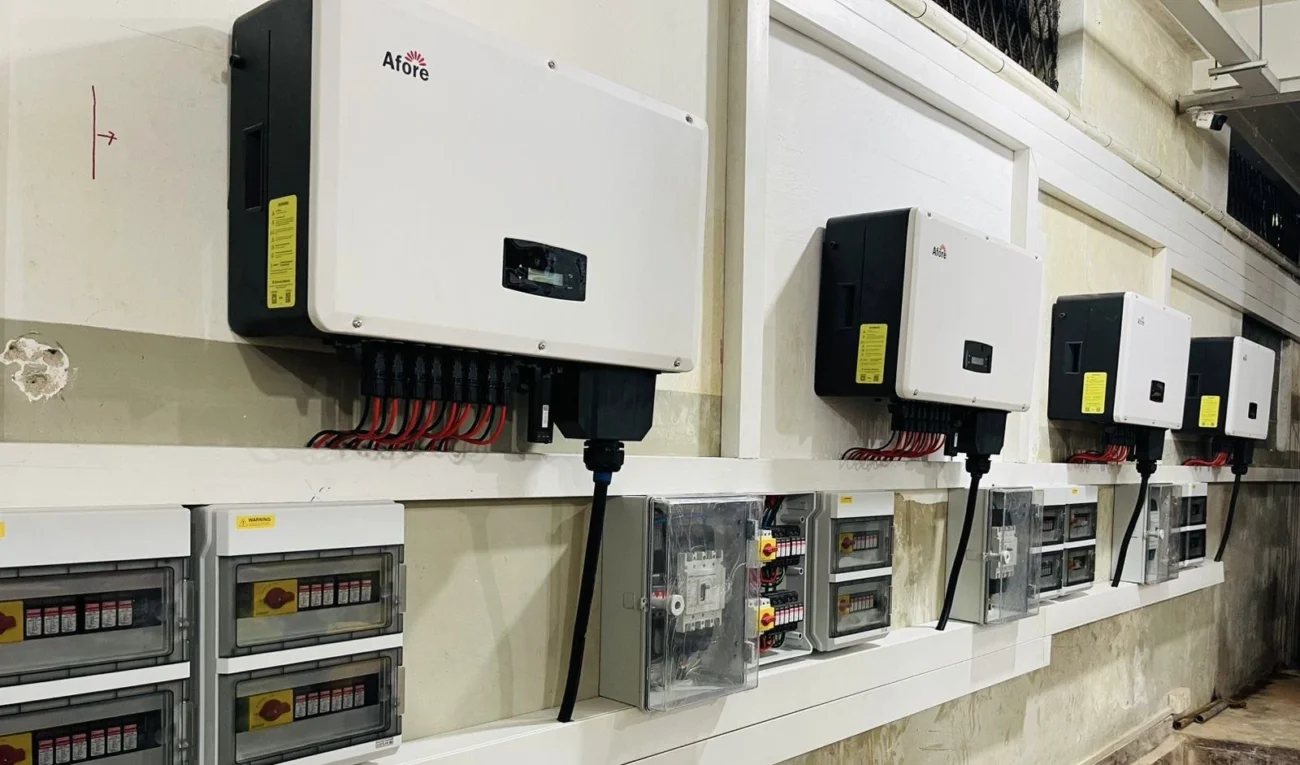
Die Rolle von Solar-Wechselrichtern in DER-Systemen
Im Ökosystem der verteilten Energieressourcen (Distributed Energy Resources, DER) spielt der Solarwechselrichter eine zentrale und oft unterschätzte Rolle. Als "Gehirn" eines Solarenergiesystems macht er nicht nur den Strom nutzbar, sondern sorgt auch für eine reibungslose Integration in das Netz, was letztlich die Zuverlässigkeit und Effizienz moderner Energienetze beeinflusst.
Was ist ein Solarwechselrichter?
Im Kern ist ein Solarwechselrichter das entscheidende Gerät, das den von Photovoltaikmodulen (PV) erzeugten Gleichstrom (DC) in Wechselstrom (AC) umwandelt, der Haushalte und Unternehmen mit Strom versorgt und Strom in das Netz einspeist. Ohne sie wäre die Solarenergie für Alltagsgeräte und den Netzbetrieb unbrauchbar. Für Leser, die an der neuesten Technologie und zuverlässigen Geräten interessiert sind, bieten führende Hersteller von Solarwechselrichtern bieten fortschrittliche Lösungen zur Maximierung der Effizienz und zur Gewährleistung der langfristigen Leistung von Systemen für dezentrale Energieressourcen.
Es gibt verschiedene Arten von Solarwechselrichtern, die üblicherweise in Systemen für verteilte Energieressourcen verwendet werden:
- String-Wechselrichter: Verbinden eine Reihe von Modulen in einem einzigen Array und bieten so eine kostengünstige Lösung für private und kleine gewerbliche Projekte.
- Mikro-Wechselrichter: Sie werden auf einzelnen Modulen installiert und maximieren die Energieausbeute, indem sie die Auswirkungen von Abschattungen oder Fehlanpassungen der Module reduzieren.
- Hybrid-Wechselrichter: Sie sind so konzipiert, dass sie sich nahtlos in Batteriespeichersysteme integrieren lassen und sowohl den Eigenverbrauch als auch die Notstromversorgung bei Stromausfällen ermöglichen.
Moderne Solarwechselrichter sind oft mit fortschrittlichen Funktionen wie Echtzeitüberwachung, Smart-Grid-Kommunikationsprotokollen und der Einhaltung von Normen wie IEEE 1547 ausgestattet. Dies macht sie zu einer entscheidenden Komponente nicht nur für die Energieumwandlung, sondern auch für die langfristige Effizienz und Sicherheit von DER-Systemen. Für Projekte, die sowohl die Solarstromerzeugung als auch die Batteriespeicherung integrieren wollen, ist ein Hybrid-Solarwechselrichter ist die ideale Wahl, denn sie ermöglicht Hausbesitzern und Unternehmen den nahtlosen Wechsel zwischen gespeicherter Energie und Netzversorgung bei maximaler Unabhängigkeit und Zuverlässigkeit.
Bedeutung für die Widerstandsfähigkeit der Netze und die Zusammenschaltung
Die Bedeutung von Solarwechselrichtern geht weit über die Energieumwandlung hinaus. In der heutigen sich entwickelnden Netzumgebung sind sie unverzichtbar für die Aufrechterhaltung der Widerstandsfähigkeit und die nahtlose Zusammenschaltung von dezentralen Energieressourcen.
1. Netzstabilität und Spannungsregelung
Intelligente Wechselrichter sind mit Funktionen ausgestattet, die die Spannung regulieren, die Blindleistung verwalten und die Frequenzstabilität unterstützen. So wird sichergestellt, dass der Zustrom erneuerbarer Energie das Netz nicht destabilisiert, selbst in Zeiten hoher Erzeugungs- oder Nachfrageschwankungen.
2. Widerstandsfähigkeit bei Ausfällen
In Verbindung mit Batteriespeichersystemen ermöglicht ein Solarwechselrichter die Aufrechterhaltung kritischer Betriebsabläufe während Stromausfällen. So verlassen sich beispielsweise viele kalifornische Hausbesitzer auf Solar-plus-Speicher-Systeme, um während der durch Waldbrände verursachten Netzabschaltungen die Stromversorgung aufrechtzuerhalten, was die lebensrettende Rolle von Solarwechselrichtern im Bereich der erneuerbaren Energien verdeutlicht.
3. Ermöglichung von Net Metering und virtuellen Kraftwerken
Moderne Solarwechselrichter erleichtern die Zwei-Wege-Kommunikation zwischen dezentraler Erzeugung und dem Netz. Dies ermöglicht Net-Metering, bei dem überschüssiger Solarstrom in das Netz zurückgespeist wird, und die Teilnahme an virtuellen Kraftwerken (VPP), die DER-Systeme zusammenfassen, um groß angelegte Netzdienstleistungen zu erbringen.
4. Cybersicherheit und Compliance
Mit der zunehmenden Verbreitung von DER betonen die Regulierungsbehörden die Notwendigkeit einer sicheren, standardisierten Zusammenschaltung. Solarwechselrichter verfügen jetzt über Cybersicherheitsfunktionen und müssen strenge Tests erfüllen, um Schwachstellen im breiteren Netz zu verhindern.
Im Grunde genommen ist der Solarwechselrichter mehr als nur ein technisches Zubehör - er ist ein Eckpfeiler der Bewegung für dezentrale Energieressourcen. Indem er Energieflüsse umwandelt, verwaltet und sichert, sorgt er dafür, dass die dezentrale Stromerzeugung sowohl für die Endverbraucher zuverlässig als auch für das gesamte Energiesystem von Vorteil ist.
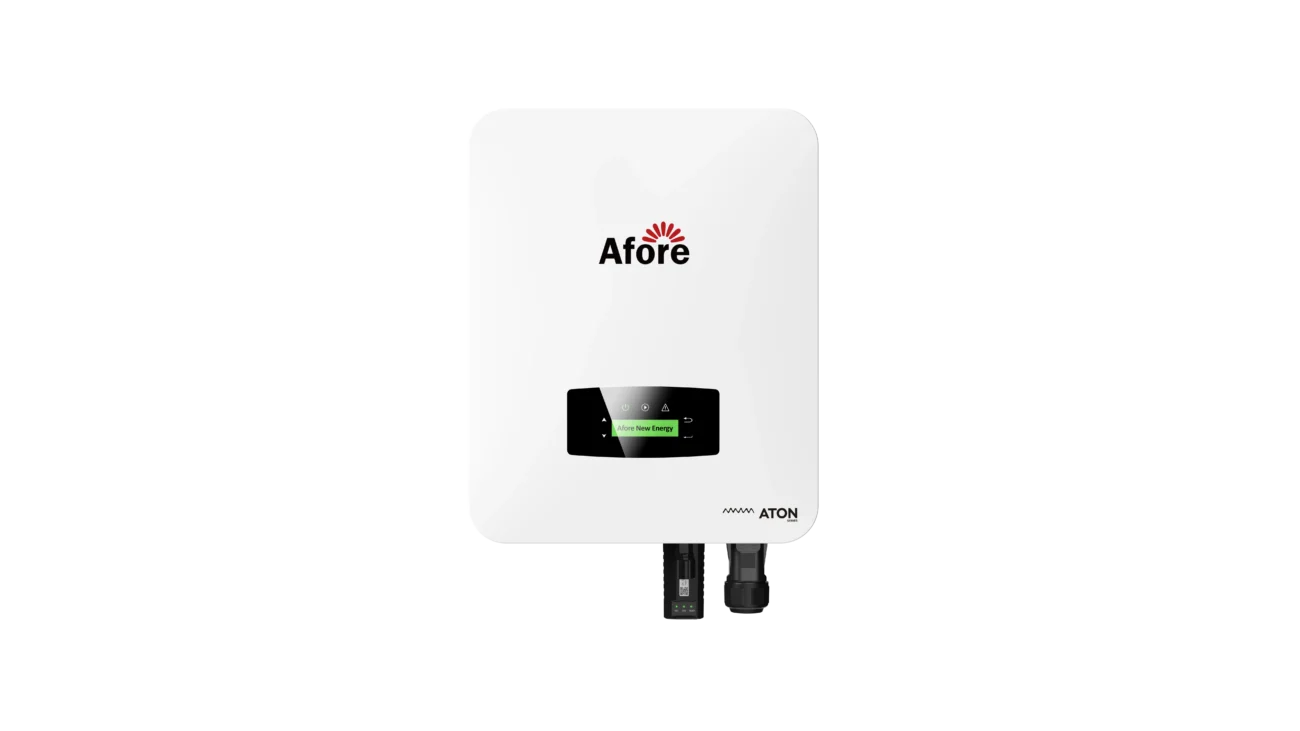
Vorteile und Herausforderungen der DER-Implementierung
Vorteile:
- Geringere Übertragungsverluste
- Widerstandsfähigkeit des Netzes bei Ausfällen
- Vorteile für die Umwelt (geringere Emissionen)
- Wirtschaftliche Befähigung der Verbraucher
Herausforderungen:
- Technische Integration in das Netz
- Regulatorische Unsicherheit
- Kapitalkosten für die Erstausstattung
- Landnutzung und Umweltgenehmigungen für Biomasse- und Windkraftanlagen
Die EPA weist auf ökologische Kompromisse hin, insbesondere bei verbrennungsbasierten DERs. Saubere Technologien wie Solar- und Windenergie bleiben jedoch die erste Wahl für langfristige Nachhaltigkeit.
Politik, Anreize und Standards
Der Erfolg von dezentralen Energieressourcen (Distributed Energy Resources, DER) hängt nicht nur von der Technologie ab, sondern auch von starken politischen Rahmenbedingungen, finanziellen Anreizen und technischen Standards, die Sicherheit und Zuverlässigkeit gewährleisten. Regierungen, Regulierungsbehörden und Branchenverbände haben Programme und Regeln eingeführt, die die Akzeptanz fördern und gleichzeitig für ein stabiles und gerechtes Netz sorgen sollen.
Nettoenergiemessung, Nettoabrechnung, Wert von DER-Programmen
Eine der wirksamsten Triebfedern für die Einführung von DER in Privathaushalten und Unternehmen ist das Net Energy Metering (NEM). Im Rahmen von NEM können Hausbesitzer und Unternehmen mit PV-Solaranlagen und Solarwechselrichtern ungenutzten Strom gegen Rechnungsgutschriften in das Netz zurückspeisen. Dieser Mechanismus verkürzt die Amortisationszeiten für Solarinvestitionen und hat die Installation von Solaranlagen auf Dächern in Staaten wie Kalifornien und New Jersey erheblich gefördert.
Mit der zunehmenden Verbreitung der Solarenergie gehen viele Staaten jedoch dazu über, Net Billing oder Value of DER (VDER) Programme einzuführen. Im Gegensatz zu NEM, bei dem den Kunden der volle Endkundentarif gutgeschrieben wird, wird bei Net Billing der exportierte Strom zu einem Tarif vergütet, der näher an den Großhandelspreisen liegt. Das Value of DER-Modell geht noch einen Schritt weiter, indem es der dezentralen Stromerzeugung einen genauen Wert zuweist und dabei Vorteile wie vermiedene Übertragungskosten, verringerte Emissionen und verbesserte Netzzuverlässigkeit einbezieht.
In New York beispielsweise sorgt der VDER-Tarif für eine genauere Entschädigung der DER-Eigentümer und gewährleistet so Fairness bei gleichzeitiger Wahrung der Netzstabilität. Diese sich entwickelnden Strategien spiegeln einen breiteren Trend wider: die Suche nach einem Gleichgewicht zwischen der Förderung der DER-Einführung und der Gewährleistung der langfristigen Nachhaltigkeit für Versorgungsunternehmen und Netzbetreiber.
Auch Anreize spielen eine wichtige Rolle. Steuergutschriften auf Bundesebene, wie der Investment Tax Credit (ITC) in den USA, ermöglichen es, dass DER-Projekte für Privathaushalte und Unternehmen - einschließlich PV-Solaranlagen in Verbindung mit Solarwechselrichtern - die Anfangskosten senken. Staatliche Rabatte, zinsgünstige Finanzierungsprogramme und Zuschüsse für erneuerbare Energien verbessern die Erschwinglichkeit weiter und machen DER zu einer realistischen Wahl für Millionen von Haushalten und Unternehmen.
IEEE 1547 und UL 1741 Wechselrichter-Normen für die Zusammenschaltung von DER
Neben finanziellen Anreizen sorgen technische Normen für eine reibungslose und sichere Integration dezentraler Energieressourcen in das Netz. Zwei der wichtigsten sind IEEE 1547 und UL 1741, die die Leistungs- und Sicherheitsanforderungen von Wechselrichtern und Verbindungssystemen regeln.
- IEEE 1547: Dieser Standard, der ursprünglich 2003 eingeführt und in den letzten Jahren aktualisiert wurde, definiert die Kriterien für die Zusammenschaltung von dezentralen Erzeugungsanlagen mit dem Stromnetz. Er umfasst wesentliche Aspekte wie Spannungsregelung, Frequenzgang, Ride-Through-Fähigkeiten und Cybersicherheit. Die Einhaltung von IEEE 1547 stellt sicher, dass DER-Installationen einen positiven Beitrag zur Netzstabilität leisten und nicht zu Störungen führen.
- UL 1741: Diese Norm befasst sich mit der Sicherheit und Zertifizierung von Solar-Wechselrichtern und anderen Verbindungsgeräten. Die nach UL 1741 geprüften Geräte müssen unter realen Bedingungen zuverlässig funktionieren und strenge Sicherheitsmaßstäbe erfüllen. Viele Staaten verlangen UL 1741-zertifizierte Wechselrichter als Bedingung für die Zusammenschaltung von DER, um eine einheitliche Qualität auf dem Markt zu gewährleisten.
Gemeinsam haben IEEE 1547 und UL 1741 eine Vertrauensbasis geschaffen, die Versorgungsunternehmen, politischen Entscheidungsträgern und Verbrauchern die Gewissheit gibt, dass der Einsatz von DER den Netzbetrieb nicht gefährdet, sondern verbessert.
Mit der zunehmenden Verbreitung von DER werden sich diese Normen weiterentwickeln und fortschrittliche Wechselrichterfunktionen, die Integration intelligenter Netze und Anforderungen an die Cybersicherheit einbeziehen. Dadurch wird sichergestellt, dass die wachsende Zahl von Solaranlagen auf Dächern, Batteriespeichern und anderen DER-Technologien sicher skaliert werden kann, ohne die Zuverlässigkeit zu beeinträchtigen.
Schlussfolgerung
Verteilte Energieressourcen sind mehr als nur ein Schlagwort - sie verändern die Art und Weise, wie wir Strom erzeugen, speichern und nutzen. Mit Hilfe von Technologien wie dem Solarwechselrichtergewinnen Einzelpersonen und Organisationen die Kontrolle über ihren Energieverbrauch zurück, stärken ihre Widerstandsfähigkeit und tragen zu einem saubereren, flexibleren Stromnetz bei.
Wenn Sie über Ihre nächste Energieinvestition nachdenken, denken Sie lokal. Denken Sie dezentral. Die Zukunft der Energieversorgung ist dezentral, intelligent und liegt direkt vor Ihrer Haustür.

FAQs
1. FAQ: Was ist der Unterschied zwischen verteilter Erzeugung und verteilten Energieressourcen?
Obwohl die Begriffe oft synonym verwendet werden, sind sie nicht identisch. Der Begriff "dezentrale Erzeugung" bezieht sich speziell auf die Stromerzeugung in kleinem Maßstab - z. B. Solarpaneele oder kleine Windturbinen -, die sich in der Nähe des Verbrauchsortes befinden. Verteilte Energieressourcen (Distributed Energy Resources, DER) ist ein weiter gefasster Begriff, der nicht nur die Erzeugung, sondern auch die Speicherung (z. B. Batterien), die Nachfragesteuerung, intelligente Solarwechselrichter und sogar Energieeffizienzmaßnahmen umfasst. Im Wesentlichen ist die dezentrale Erzeugung eine Untergruppe von DER.
2. Was ist eine verteilte Ressource?
Eine dezentrale Ressource ist eine Technologie oder ein System, das Strom, Energieeinsparungen oder Netzdienstleistungen in der Nähe des Verbrauchsortes und nicht in einem zentralen Kraftwerk bereitstellt. Dabei kann es sich um eine Solaranlage auf dem Dach mit einem Solarwechselrichter, ein gemeinschaftliches Batteriespeichersystem oder sogar eine Software handeln, die dabei hilft, die Nachfrage in Spitzenzeiten zu steuern und zu reduzieren.
3. Ist die Solarenergie eine dezentrale Energiequelle?
Ja, die Solarenergie ist eine der häufigsten und wirkungsvollsten dezentralen Energieressourcen. PV-Dachanlagen, die mit einem Solarwechselrichter kombiniert und oft mit Batterien ausgestattet sind, ermöglichen es Haushalten und Unternehmen, sauberen Strom vor Ort zu erzeugen. Die Beliebtheit der Solarenergie nimmt weiter zu, da sie erhebliche Kosteneinsparungen ermöglicht, die Treibhausgasemissionen reduziert und die Netzstabilität verbessern kann, wenn sie mit intelligenter Technologie integriert wird.
4. Was ist ein Beispiel für verteilte Energie?
Ein klassisches Beispiel für dezentrale Energieversorgung ist eine Wohngegend, in der die Häuser mit Solaranlagen auf dem Dach und Batteriespeichern ausgestattet sind. Jedes System, das mit Solarwechselrichtern ausgestattet ist, produziert und verwaltet unabhängig Strom und speist überschüssigen Strom in das Netz ein. In größerem Maßstab ist ein Universitätscampus, der mit einem Mikronetz betrieben wird, das Solaranlagen, KWK-Einheiten und Nachfragereduzierung kombiniert, ebenfalls ein gutes Beispiel für dezentrale Energieversorgung in Aktion.
5. FAQ: Wie viele in Frage kommende dezentrale Energiequellen gibt es?
Es gibt keine feste Zahl, da sich die Kategorie mit der Innovation ständig erweitert. Zu den bekanntesten dezentralen Energieressourcen gehören jedoch Photovoltaikanlagen, Solarwechselrichter, Batteriespeichersysteme, Brennstoffzellen, kleine Windturbinen, Biomassegeneratoren, Kraft-Wärme-Kopplungsanlagen (KWK), Demand-Response-Programme und fortschrittliche Energieeffizienztechnologien. Zusammengenommen stellen diese Ressourcen ein vielfältiges Instrumentarium für die Modernisierung unserer Energiesysteme dar.
6. Können Häuser dezentrale Energiequellen nutzen?
Ganz genau. Hausbesitzer auf der ganzen Welt entscheiden sich zunehmend für dezentrale Energieressourcen wie Solarmodule auf dem Dach, die mit intelligenten Solarwechselrichtern und Hausbatterien kombiniert werden. Diese Anlagen senken nicht nur die Energierechnungen, sondern bieten auch eine Notstromversorgung bei Stromausfällen. Mit den richtigen Anreizen können Haushalte auch an Programmen wie dem Net-Metering teilnehmen, bei dem überschüssiger Strom an das Netz zurückverkauft wird und die Systeme in einkommensschaffende Anlagen verwandelt werden.
7. Wie wird dezentrale Energie heute genutzt?
Verteilte Energieressourcen werden heute in allen privaten, gewerblichen und industriellen Bereichen eingesetzt. Privathaushalte erzeugen Solarstrom, Unternehmen nutzen KWK-Anlagen zur Steigerung der Effizienz, Telekommunikationsunternehmen setzen Backup-Batteriesysteme ein, und Versorgungsunternehmen verwalten große DER-Flotten über virtuelle Kraftwerke. Die Kombination aus intelligenten Solarwechselrichtern, fortschrittlicher Software und Speichersystemen hat DER weltweit zu einem Eckpfeiler von Strategien zur Energieresilienz und Dekarbonisierung gemacht.




